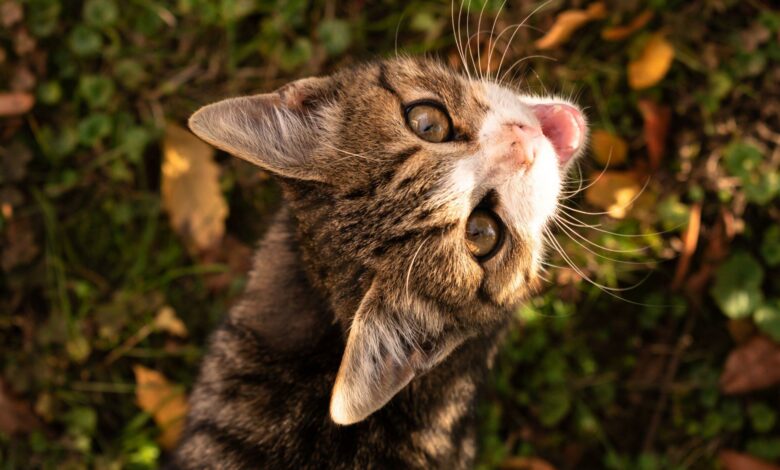The Importance of Microchipping Cats A Comprehensive Guide to the Procedure and Benefits
Microchipping Cats

Microchipping has become an essential aspect of responsible pet ownership, offering a reliable and permanent method of identification that significantly increases the chances of reuniting lost cats with their owners.
In this article, we will discuss the importance of microchipping cats, explore the procedure, and outline the numerous benefits associated with this invaluable technology.
The Importance of Microchipping Cats:
1. Permanent Identification
Collars and tags, while helpful, can be lost or removed, rendering them ineffective in identifying lost pets. Microchips offer a permanent and tamper-proof solution, as they are small, electronic devices implanted beneath your cat’s skin that store a unique identification number. This number links to a database containing your contact information, ensuring that your cat can always be traced back to you.
2. Increased Likelihood of Reunion:
Thousands of cats go missing every year, and sadly, many never find their way home. Microchipped cats, however, have a much higher chance of being reunited with their owners. When a lost cat is brought to an animal shelter or veterinary clinic, it will be scanned for a microchip, allowing your contact information to be retrieved from the database and facilitating a happy reunion.
3. Proof of Ownership:
In cases of disputed ownership or pet theft, a microchip serves as proof of ownership. The registered contact information on the microchip database verifies the rightful owner of a cat, helping to resolve disputes and return stolen pets to their homes.
4. Travel and Relocation:
Microchipping is often a requirement for pet passports and entry into certain countries. A microchipped cat can be easily identified and matched with its accompanying documentation, ensuring a smoother process when crossing borders.
5. Emergency Care:
If your cat is found injured and taken to a veterinary clinic, the microchip can be scanned to obtain your contact information. This allows the veterinarian to reach you quickly, discuss your cat’s condition, and make informed decisions about its care.
The Microchipping Procedure:
The Chip:
Microchips are tiny devices, about the size of a grain of rice, which use radio-frequency identification (RFID) technology to store a unique identification number. They do not require batteries and are designed to last the lifetime of your cat.
The Implantation Process:
Microchipping is a quick, safe, and relatively painless procedure that can be performed by a veterinarian or trained professional. The microchip is inserted beneath your cat’s skin, usually between the shoulder blades, using a hypodermic needle. The process is similar to administering a vaccination and takes just a few seconds. While some cats may experience mild discomfort during the procedure, most tolerate it well, and anaesthesia is not required.
Registration:
After your cat has been microchipped, it’s crucial to register the microchip with a reputable database, providing your contact information. This step is essential to ensure that your cat can be identified and traced back to you if it goes missing. Remember to update your contact information whenever you move or change phone numbers.
Scanning and Verification:
Microchips are passive devices, meaning they do not actively emit a signal. Instead, they are activated by a microchip scanner, which sends out a radio-frequency signal to read the chip’s unique identification number. Most animal shelters and veterinary clinics are equipped with scanners, ensuring that lost cats can be quickly checked for microchips.
Benefits of Microchipping Cats:
- Permanent and Reliable Identification
Microchips offer a secure, tamper-proof form of identification, ensuring that your cat can always be traced back to you.
- Increased Chances of Reunion
Microchipping significantly increases the likelihood of a happy reunion if your cat goes missing, as it allows animal shelters and veterinary clinics to quickly identify and contact you.
- Proof of Ownership
Microchips serve as proof of ownership in cases of disputed ownership or pet theft, enabling the rightful owner to be verified and facilitating the return of stolen pets.
- Travel and Relocation
Microchipping simplifies the process of international travel and relocation, as it is often a requirement for pet passports and entry into certain countries.
- Emergency Care
Microchips help ensure that you can be contacted quickly if your cat is found injured, enabling veterinarians to make informed decisions about its care and treatment.
- Promotes Responsible Pet Ownership
Microchipping encourages responsible pet ownership by holding pet owners accountable for their animals and aiding in tracking the number of pets within a community, which helps authorities monitor and promote responsible pet population control.
Conclusion:
Microchipping cats is an invaluable tool in promoting responsible pet ownership and ensuring the safety and well-being of our feline companions. By providing a permanent and reliable method of identification, microchipping significantly increases the likelihood of reuniting lost cats with their owners, offers proof of ownership in disputes, and simplifies travel and relocation processes.
The microchipping procedure is quick, safe, and relatively painless, and the benefits it offers far outweigh any mild discomfort your cat may experience during the process. As a responsible pet owner, it’s crucial to ensure that your cat is microchipped and that the contact information associated with the microchip is accurate and up-to-date.
By investing in this simple yet effective technology, you can help protect your cat, secure its future, and enjoy the peace of mind that comes with knowing that your beloved pet can always be traced back to you.

